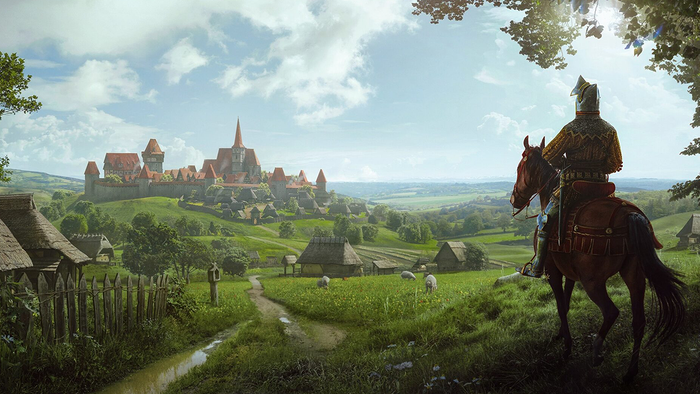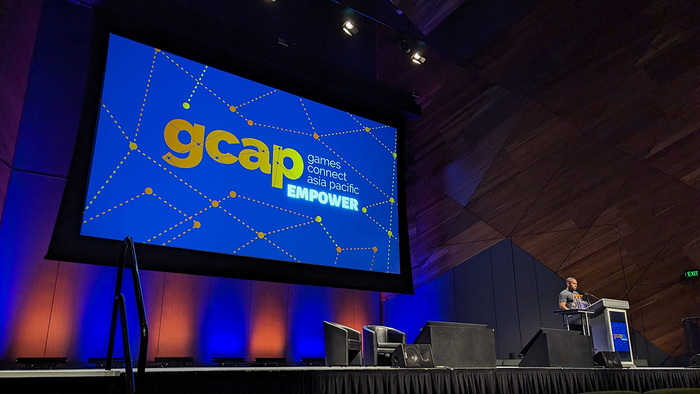Interview: Lawlor On Modern Pinball Market, Small Team Creativity
Legendary designer Pat Lawlor, the creator of classic pinball machines from Fun House to The Addams Family, talks to Gamasutra about where that pinball market is at today -- and why large development groups can "do good things, but not great

[In this interview on the oft-forgotten pinball gaming market, game designer Pat Lawlor, the creator of classic pinball machines from Fun House to The Addams Family, talks with Gamasutra about where that pinball market is at today -- and why large development groups can "do good things, but not great things."] Few people have defined the modern era of pinball like Pat Lawlor has. In the late 1980s, he emerged as a leading designer in the industry with innovative Williams titles like Earthshaker and Whirlwind. In 1990, Lawlor and Larry DeMar hit it big with FunHouse, a pinball game in which an animatronic head named Rudy taunted players and dominated the playfield. Lawlor and DeMar went on to create The Addams Family for Bally and watched as it became the best-selling pinball machine in history. Lawlor’s design work continued throughout the 1990s, as he unveiled such pinball titles as No Good Gofers, Red and Ted’s Road Show, Safecracker, and a richly complex take on The Twilight Zone. After leaving Williams, Lawlor founded his own design firm, where he has since engineered Stern Pinball offerings based on Monopoly, NASCAR, Family Guy, and other familiar properties. He also can be seen in Tilt: The Battle to Save Pinball, a recent documentary that digs into the story behind Pinball 2000, Williams’ failed franchise that promised to revolution the genre by mixing pinball and video games. We recently tapped Lawlor for his opinions on past projects, the state of pinball, and what can make a regular silverball machine into a classic. What do you consider the most important step in getting a pinball machine's game flow, its kinetics, just right? Pat Lawlor: There are obviously many aspects involved in kinetics. Every designer has differing goals for the "feel" of the game. Usually these goals are a result of the kinds of games the designers like personally. Things to consider are, in no particular order: 1) Middle shots are easier for beginners. 2) How to mix stop and go shots with nice return flow shots. 3) How fast is the overall game? Very fast games are very difficult for beginners. 4) When a shot is missed, what happens to the ball? Is it a bad, clunky thing? Does the ball come back in my face? 5) Are these shots just "there,” or do they represent something from the theme? How do you go about deciding what special features to put into a pinball game? PL: The features are generally driven by the theme that has been chosen. Sometimes those choices are fairly obvious, such as putting Thing into The Addams Family. Sometimes those choices are fairly obtuse, such as what to put in Family Guy. I knew I made the right decision on that one when I presented my idea to the Family Guy folks in a meeting. When I suggested a small "Stewie" pinball machine in the big machine they loved it. It's always a big moment when folks "get" what you are up to in the arcane world of pinball. In addition to creating pinball titles, you also designed some video games in the early 1980s, including Robby Roto and the apparently unreleased Demons and Dragons. How did your experiences in making video games influence your work in pinball game design? PL: The types of video games I worked on are now called "retro," 2D games with limited (by todays standards) game play mechanics. Also, back then, one or two people generally did almost all of the design and programming to make a video game. It was a very personal type of endeavor that generated those games. Pinball design is somewhat still very much that type of work. That is, the designer sets the tone and the basis for the rules with what he does. It's a very personal creative process. Why was Demons and Dragons canceled? PL: Demons and Dragons was designed and tested going into video collapse. Video collapse was the great demise of the coin-operated game industry circa 1983. Almost overnight all video work was stopped and the industry imploded. Everyone was fired, laid off, etc. (Sadly, I believe you will see a smaller version of this in our current economy.) Most video only projects were stopped, and the industry tried to do "old is new stuff" like the video shuffle alley I then began work on. Demons and Dragons was never produced outside of the prototypes. How does working with your own design firm to create titles for Stern Pinball differ from your days of designing games for Williams? Do you have more creative freedom, even with the current pinball market? PL: Stern is a 180-degree different environment from what Williams was. At Williams, the game designers were the creative driving force at the company. We were pretty much allowed to make what we wanted including picking our own themes for our projects. At Stern, the theme is now universally picked by management. The game designers are trapped into working on projects they otherwise might never have chosen. It's much more of a "Lets ALL HUG and build a game", instead of the smaller creative team moving the ball. I have never believed large groups do great things. They do good things, but not great things. Large groups lead you astray because they are never interested in radical concepts and chances. That’s why companies driven by "focus" groups generally make such vanilla products. Focus groups are a way of management covering their rear end instead of trusting their talent. In your opinion, why was The Addams Family pinball game such a great success? PL: Timing, momentum, theme, programming talent, and... luck. 
lawlorpinball1.jpg
On a similar note, why do you think FunHouse has such a following among pinball fans and many casual players? Aside from Rudy the talking head, that is. PL: That’s like asking, "What do you like about chocolate milk? Aside from the fact it’s chocolate?" Rudy is the game. Rudy incorporates a level of human involvement in a story line like no other game before it. For the first time, your adversary is in the pinball game, is real, and you can see him ,and he can taunt you. You can fight back and hit him with the ball. A funny Funhouse story: When we first tested the game in a large arcade, we set the game up in the morning and waited for customers to come to the arcade. FunHouse was placed into a long line of pinball machines. We had a guy come walking along the line pretty briskly, just sort of bopping along glancing at the games. Just like in a comedy sketch this guy makes it one step past the game, when he stops dead, turns to his side and stares into the game with Rudy. He runs to the change machine and starts to play to see what the "big head" on the playfield would do. I knew at that point we had a huge game. Do you think that the modern pinball market can support only games with popular licenses? Is there really no room for titles like No Good Gofers or Red and Ted's Road Show? PL: The answer to that question is much less obvious than it appears. In America for the last, oh, say 20 to 25 years, kids are mercilessly marketed to. Then they become adults with those values. We now raise everyone to believe that a well known corporate "thing" is far superior to a less known item. Case in point: there is a fairly well known study where little kids (I believe five year olds) were given two lunches. One came in a McDonald’s bag, the other came in a plain bag. The kids were asked, "Which one tastes better?" They universally answered the McDonald’s one. The fact of the study was that the same food was in both bags. No difference. Nada. The moral is this.... if you are a large company like, say, Disney, you can afford to show new product because you can back it up with advertising. If you are not a large company, you cannot push through 20 years of programming in the American public, that your product might be fun (or tasty ). So, the answer is, right now we take the easy road to sales and tie in with the well-known item. For the consuming public, it works (and fools them) every time. In your opinion, what would it take to bring pinball back to the same level of popularity it enjoyed in the days of The Addams Family? Are pinball's fortunes invariably tied to the state of the modern arcade? PL: Pinball has not adequately adapted to the 21st century. Pinball machines that are being made today are basically the same machines that were being made in 1992. Except for some collectors and a few die-hard locations, the game is considered to be irrelevant by the general population. Without changing the game to appeal to today’s technology-driven audience, it will die a slow but certain death. Today’s modern arcade is by and large a kids’ ticket emporium, and has very little in common with its older adult-driven version. Do you think there was an overriding reason that Williams' Pinball 2000 line didn't succeed, or was it a combination of the market, the two games released, and the decisions made at Williams? PL: The answer to whether or not Pinball 2000 succeeded has never been answered. Williams was in the process of becoming a gaming (slot) company and wanted very badly to be out of the pinball business. That’s because the stock analysts hated that they couldn't value the stock correctly as long as the old vestige part of the company still survived. Since there were no buyers for the pinball group at its write-down value, it was economically smarter to close the business and take the write-down valuation on the books. It was also smart never to let the world know if another company could have made a go of it, since at that time, pinball was still a market share threat to one of the sister companies. Several years ago, you mentioned that it would be exceptionally difficult to create a pinball game similar to Wizard Blocks or another Pinball 2000 title due to the expenses involved and the state of the pinball market. Do you think the market has gotten better or worse since then? PL: Market? What market? Right now, December 2008, the coin-op game market as a whole is in terrible shape. It had been diving even before the economy as a whole collapsed. I still believe Pinball 2000 would make money on location. I still also believe that no one is willing to put up the necessary capital expenditure to make that happen (smart if you are a money guy, the economic upside versus the risks are huge). What new features did you put into your latest title, CSI? We've seen that it has a skull that launches balls from its eye sockets. PL: CSI has the usual array of toys and mechanical tricks and traps. And yes, there is a skull in the game. That was suggested by the creator of the show, who is a big pinball fan.About the Author(s)
You May Also Like







